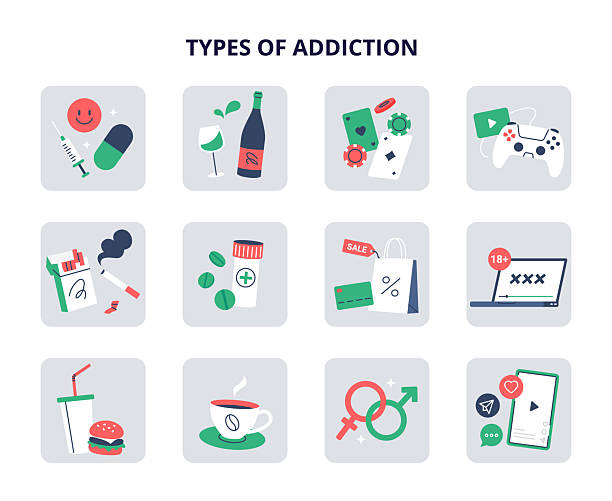Stimulants are often viewed as an easy way out of problems related to fatigue, low focus, or poor performance, thanks to the fast moving modern world. From students to working professionals, it is shocking how stimulants like Adderall, Ritalin, cocaine, and even meth have been misused so broadly. Even though these drugs offer an increase in energy and alertness, dependency and long term damage is a likely outcome with prolonged or unsupervised use. The dependency on these stimulants is a serious health concern that is emerging and overlooked, which needs understanding, empathy, and effective treatment options.
This article covers all aspects of stimulant addiction including types of stimulants, possible effects, signs of abuse, and most importantly, ways to recover.
What are Stimulants?
Stimulants are considered a subtype of psychoactive drug that increase the levels of alertness, attention, and energy of a person by enhancing activity of the brain. Their effect on a person’s nervous system is to increase the amount of dopamine and norepinephrine released. These two neurotransmitters are related to pleasure and attention.
Common Types of Stimulants:
Prescription Stimulants:
Adderall (amphetamine)
Ritalin (methylphenidate)
Concerta
Dexedrine
Illicit Stimulants:
Cocaine
Methamphetamine (“crystal meth”)
Ecstasy (MDMA, though it has hallucinogenic properties)
Over-the-Counter Stimulants:
Caffeine pills
High energy diet or weight loss supplements
Some people may use prescription stimulants for the treatment of ADHD, but misusing or using without medical advice can cause severe mental and physical damage.
Why Do People Misuse Stimulants?
Every single person misusing stimulants often has a perceived stimulant in mind. The most common include:
“Study drugs” for school and work
Staying awake during exams
Appetite and weight management
Recreational purposes
Increased motivation
All these reasons come with short-term effects, but the long-term ramifications could be deadly.
How Stimulants Addiction Develops?
With so many things competing for our attention and time—resulting in increased stress levels, people experience a lack of motivation and focus—and that’s when it’s our turn to find that boost of energy; stimulants.
While some think it makes them feel more productive, over time they’ll grow dependent on the substance to achieve basic goals and tasks such as:
Circumstances or consequences of using the drug uncontrollably in spite of lasting damage:
Dependence: Relying on the drug or substance to go through basic, daily activities.
Addiction: Compulsive drug seeking behavior reliant on the substance.
Tolerance: Spending piles of money to achieve the same goal.
Stimulants produce an excessive amount of dopamine in the brain, pushing an overwhelming feeling of happiness. The rush of dopamine, often seen as a superpower, can break easily if things go wrong.
Indicators and Outcomes of Stimulant Abuse
Being the first to spot a sign for stimulant abuse can be beneficial both for recovery and intervention reasons.
Warning signs may include but are not limited to the following:
Physical signs:
– Restlessness or sleeping issues
– Higher than usual blood pressure or heart rate
– Less appetite, resulting to weight loss
– Shaking or twitching muscle
Behavioral signs:
– Shopping from different doctors for prescriptions
– Telling half truths about drug use
– Greater productivity than usual, or obsessively focusing on tasks
– High and partaking in dangerous activities
– Increased aggression or drastic behavioral changes
Psychological signs:
– Shifts in depression and euphoria
– Feeling overly happy or experiencing manic episodes
– Feeling anxious or paranoid
– Hearing voices or hallucinations (When used heavily for a long period of time)
Professional help should be sought immediately for these symptoms to cease.
Health risks related to prolonged use
The use of stimulants takes a toll on one’s mental health and requires careful consideration.
These consequences can be dire:
– Increased chances of a stroke, heart attack or having high blood pressure: Damage to cardiovascular health.
– Altering the structure of the brain, impede capabilities of memory, and negatively disturbing the roles of dopamine: Neurologic impairment.
– Having suicidal thoughts, becoming psychotic, or clinically depressed: Mental disorders.
– Electing legal consequences, destructive academic results, losing one’s job, and weakening ties with others: Social and legal impacts.
Withdrawal from Stimulants
The withdrawal process can be extreme and challenging. The symptoms may differ, but these are the most common:
– Extreme fatigue or excessive sleepiness
– Depression and a lack of drive
– Strong cravings
– Increased anger or anxiety
– Difficulty paying attention
– Disturbances in sleep activities
Symptoms in this stage might persist for several days to weeks, depending on the severity of consumption. For some, medically supervised detox might be the safest route.
Withdrawal Process with Stimulant Addiction Treatment Steps
It’s important to note that recovery from stimulant addiction is possible – but with the right approach of treatment. Medical care, therapy, and robust support systems often yield the best and most favourable results.
1. Medical Detox
Medically assisted detox is often a step taken only when necessary. However, with severe withdrawal symptoms, being under close medical supervision can help maintain safety.
2. Inpatient or Residential Rehab
Noteworthy are set environments, such as residential treatment centers, which provide 24-hour individual therapy, group counselling, and a tailored recovery plan.
3. Outpatient Treatment
Supportive home environments allow for more flexibility. Outpatient care gives patients access to regular check-ins and therapy sessions while maintaining a personally defined schedule.
4. Behavioral Therapies
Cognitive Behavioral Therapy (CBT)
Contingency Management
Motivational Interviewing
These treatment procedures help patients identify triggers and develop life rebuilding strategies.
5. Dual Diagnosis Treatment
Most users who become dependent on stimulants battle with mental health disorders. Integrated treatment is crucial for a lasting recovery.
6. Support Groups
Peer support is facilitated during recovery both in 12-step programs like Narcotics Anonymous (NA) and in non-12-step groups.
The Need for Kier Intervention
Addiction to any form of stimulants can escalate quickly. Early identification is crucial. Signs should be actively looked for and candid discussions about mental health and substance use were encouraged among parents, teachers, and employers.
For a loved one experiencing troubling mental change, reach out to a professional and have a conversation. Sometimes the difference between life and death is just a phone call.
Finding Help
Picking the most effective recovery plan is vital. Touchstone Recovery Center has a team specializing in stimulant addiction and provides individually tailored, evidence-based residential programs that ensure safety while promoting healing.
In Conclusion!!
What starts as a promise in the form of enhanced performance or energy becomes an albatross tethered around one’s neck in a readily available form of attention deficits and stimulants. Recovery is possible without obstacles or interference.
Support and guidance along with proper treatment empowers individuals to regain control of their lives, health, and joy without dependence on substances.
If you or a loved one battles stimulant addiction, take action today. Start the path to recovery now.






